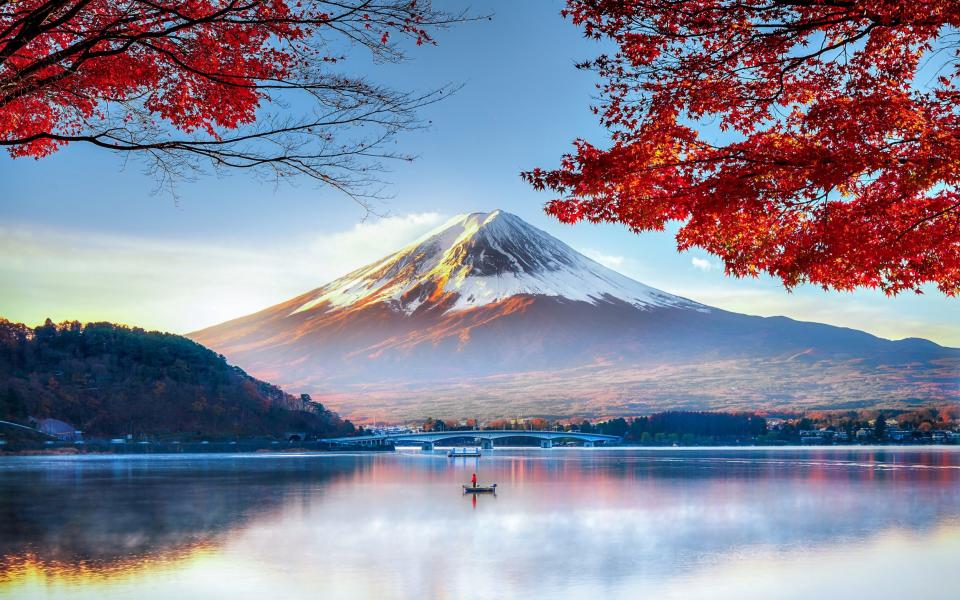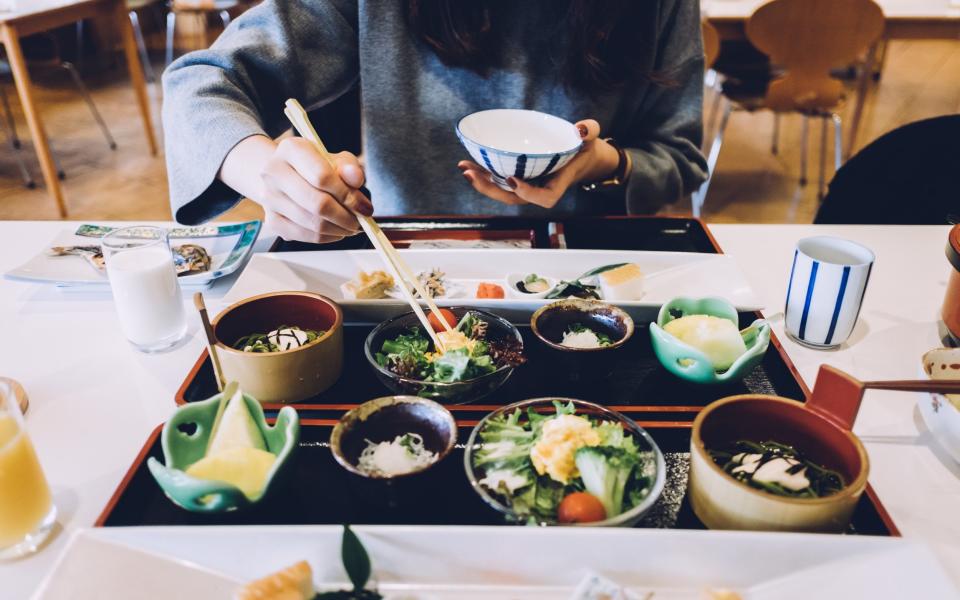The falling yen has helped fuel a tourism boom in Japan. Some 33 million visitors are expected this year, a new record — and a million more than before the pandemic. But not everyone is celebrating.
In April, the small town of Fujikawaguchiko made headlines when it took a drastic step against “overtourism” by installing a black screen to block a popular viewpoint (and selfie spot) of Mount Fuji. Now the trend appears to be catching on, with a raft of new restrictions in Tokyo, Kyoto and elsewhere.
“These restrictions are a response to very real problems,” says Rebecca Hallett, a Japan specialist who has visited the country more than a dozen times. The Japanese remain generally welcoming to tourists, she says, but are losing patience with bad behavior among a significant minority.
Here are some of the new rules:
Luggage charges on trains – £5 per bag
Lugging your suitcases onto a train feels like an inevitable part of traveling. Yet Japan’s cheap courier services mean locals prefer to send their luggage ahead of them. As a result, they don’t appreciate bulky suitcases blocking aisles or taking up seats on crowded commuter trains.
Earlier this year, the Shinkansen rail network introduced an additional fee for anyone carrying a bag longer or taller than 160cm. Expect to pay ¥1,000 (£5) per bag.
No access to Geisha Streets – £50 fines

Kyoto’s famous Gion district, home to geisha teahouses, is a must-see for tourists. However, in recent years, visitors have been increasingly engaging in bad behavior, including harassing geishas to get the perfect souvenir photo.
In response, Kyoto has now banned tourists from visiting the historic private alleys between the teahouses, with anyone taking a photo of a geisha without her permission facing a ¥10,000 (£50) fine.
Dinner nights for locals only – and discounts for Japanese
Japan is one of the world’s top culinary destinations. However, some establishments are trying to protect their regulars from the influx of internationals. An okonomiyaki restaurant in Hiroshima has banned tourists on Friday nights and reserved tables for locals only.
Others take a more clever approach. In Tokyo’s Shibuya district, the menu in small print (in Japanese) states that all locals get ¥1,000 (£5) off their total bill.
Bus routes only for tourists
Clean, efficient public transport is a point of pride for Japan. But an increase in tourists means that some busy services are running slower than usual. In response, Kyoto has created buses specifically for tourists, taking you directly to popular sights without annoying commuters.
Memories of Japanese manners – and no loitering
Japan is seen as a country of impeccable manners and new customs. But how many tourists take a quick refresher course before they travel? Fed up with the ongoing transgressions, which may or may not coincide with a 50 percent increase in American visitors, Kyoto has launched a new poster campaign.
A new “Mind Your Manners” campaign will remind English-speaking visitors of local customs. It includes basics like not littering or shouting, as well as an encouragement not to hang out in large groups (a tricky one for group tours).
Mount Fuji Limits – Plus £10 Surcharges


Like other world-famous attractions, Mt. Fuji can get a little crowded at times. Starting this summer, authorities have limited the number of visitors to 4,000 per day and introduced new fees (¥2,000 / £10) for those taking the popular Yoshida Trail. Other hotspots are taking a similar approach: Tokyo’s Studio Ghibli Museum now limits daily visitors to 3,500 on weekdays and 4,000 on weekends.
No tourists on the fastest trains
Tourists love the Japan Rail Pass, which offers unlimited use of the Shinkansen rail network for a limited time. But you should know that the rail pass does not cover all services – namely the faster Nozomi and Mizuho services. While these routes are only a few minutes faster, they rely on locals getting on and off the train in a matter of seconds – so they don’t have time to wait around for unsuspecting tourists.
Tourists pay extra – up to four times more
Although common in other Asian countries, the idea of charging foreigners more remains taboo in Japan. But is the tide turning?
This month it was reported that the ancient Himeji Castle could soon charge non-residents a quadruple entrance fee (¥4,000 / £20). The local mayor defended the extra charge by saying that locals already pay for its upkeep through their taxes.
Higher tourist tax – up to £9.80 per night
Like their European counterparts, Japanese cities have raised daily entrance fees for tourists, although the amounts are not exactly sky-high.
Everyone staying overnight in Kyoto now pays a daily tourist tax on their hotel room, ranging from ¥200–1,000 per night (£1-£5). The northern island of Hokkaido, known for its ski resorts, now charges each guest an extra ¥2,000 (£9.80) per night.


Send visitors elsewhere
Don’t worry; Japan doesn’t want to divert tourists to Timbuktu. But the government does want visitors to spread out away from the crowded hotspots (according to official figures, 72 percent of foreign tourists stay in Tokyo, Osaka and Nagoya).
The country is currently promoting 11 less-visited destinations, including the samurai heartland of Hokuriku and the Nagano Alps.
“I had a great time in Shimane a few years ago – I saw kagura performances, visited Japan’s oldest shrine and drank sake where it was invented,” says Japan expert Rebecca Hallett. And what’s more, only 0.1 percent of foreign tourists go there now.
But luxury travelers are welcome…
While loudmouthed influencers are a no-go, another class of traveler can count on the red carpet treatment – perhaps literally. Japan’s tourism authorities are currently focusing on maximizing the number of “luxury tourists”, defined as those spending more than ¥1 million (around £5,000). Good news if you’re one of them.